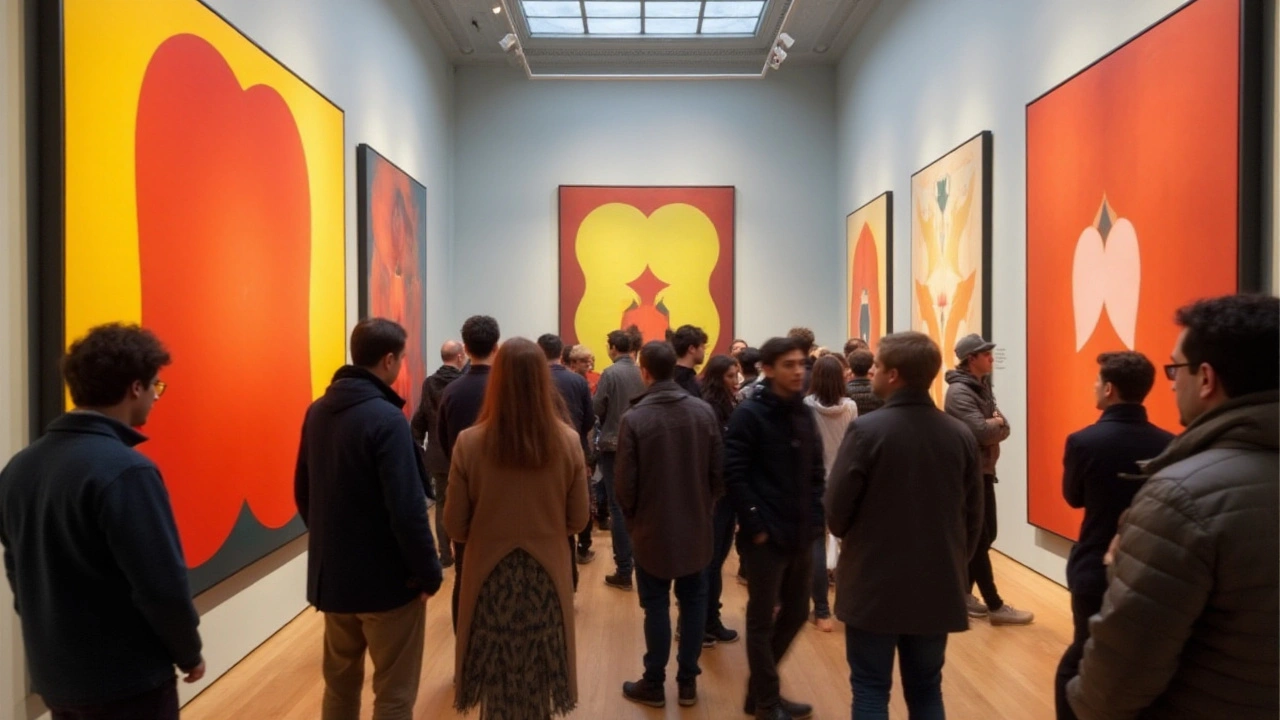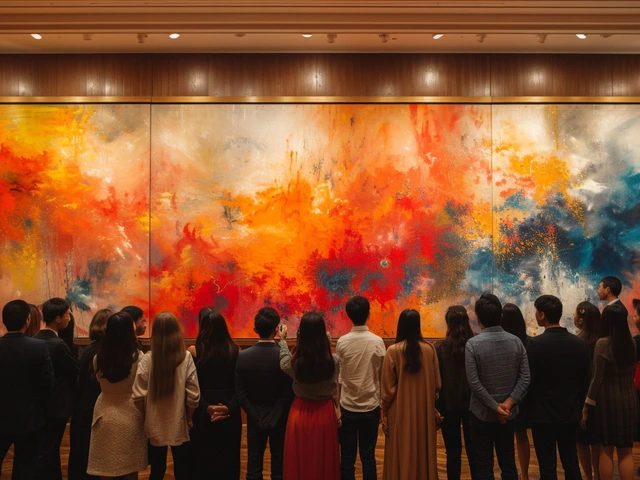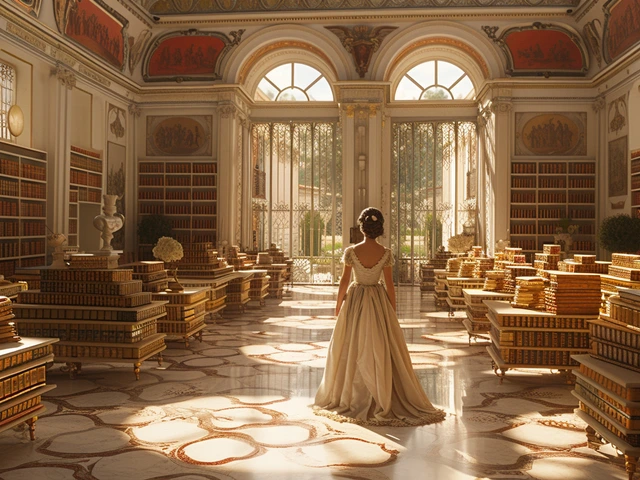In the whirlwind of the early 20th century art scene, a bold vision quietly carved its own distinct path amidst the vibrant tapestry of Russian avant-garde movements. Known as Suprematism, this groundbreaking movement sought to transcend the down-to-earth constraints of the real world, aiming instead for the pure ecstasy of artistic expression. It was a time when art was continuously questioning and pushing boundaries, and Suprematism stood at the forefront with its pioneering approach.
At its heart, Suprematism was less concerned with the objects depicted and more with the supremacy of pure artistic feeling. The movement was pioneered by Kazimir Malevich, who introduced its unique perspective through a series of captivating and highly abstract works. Through exploring the relationship between shape, color, and space, Suprematism became a fundamental shift away from the representational and figurative art of the past.
- Origins and Founders
- Philosophy and Core Principles
- Iconic Works and Artists
- Influence on Modern Art
- Criticism and Controversies
- Legacy in Contemporary Art
Origins and Founders
The story of Suprematism begins in the turbulent years just before World War I, a time of rapid social upheaval and intense artistic experimentation. It was a period when Russian artists were eagerly looking toward the West, inspired by the groundbreaking developments in modern art taking place in cities like Paris and Berlin. However, within this dynamic cultural exchange, there arose a unique craving to develop something truly Russian, something that spoke to the soul’s depths in a way that transcended the surface realities of everyday life.
Enter Kazimir Malevich, an artist whose imaginative vision led to one of the most radical departures in art history. Born in Kiev in 1879, Malevich was a child of his time and place, absorbing the vibrant folk traditions of his homeland while being equally enamored by the avant-garde trends sweeping through Europe. By 1913, he was already exploring the limits of non-representational art, dabbling in Cubo-Futurism along with his contemporaries. Yet, it was that fateful year that he would distill his nascent ideas into what would become known as Suprematism.
Malevich's breakthrough came with the creation of the painting "Black Square," a work that stripped away the distractions of the observable world, leaving only the purest form and color on the canvas. This groundbreaking piece was first exhibited in 1915 at The Last Futurist Exhibition of Paintings 0,10 in Petrograd. It wasn’t merely a painting but a manifesto, a bold declaration of the supremacy of shape and color over representation. Not only did the exhibition mark the public debut of Suprematism, but it also served as a symbolic space where Malevich could present his ideas to the world beyond the confines of traditional art circles.
"Art no longer cares to serve the state and religion, it no longer wishes to illustrate the history of manners, it wants to have nothing further to do with the object, as such, and believes that it can exist in and for itself without 'things' (that is, the 'time-tested' art)." - Kazimir Malevich
The ideas underpinning Suprematism found resonance among other artists, leading to the formation of a movement that was as much philosophical as it was visual. It wasn’t long before the movement attracted followers, becoming a magnet in the bustling milieu of Russian avant-garde art. Artists such as El Lissitzky and Aleksandr Rodchenko would go on to explore these principles, extending Suprematism into new realms and applications. They aimed to dispel art’s ties to descriptive and symbolic assumptions, focusing instead on the autonomy of visual form and the emotional impact of abstraction.
From the very outset, the success and innovation of Suprematism, as with many art movements, lay not just in the hands of one person but in a collective spirit of exploration and rebellion. Though Malevich was its charismatic leader, he was supported by a cadre of artists and thinkers who helped expand, critique, and disseminate his ideas across the artistic spectrum. Together, they forged a new path that would influence everything from graphic design to architecture, leaving an indelible mark on the creative landscape of the 20th century and beyond.
Philosophy and Core Principles
Suprematism pivots on the idea of creating a visual language unbound by the world's physical restraints, where personal emotion and unconscious intuition prevail as supreme. This philosophy is a departure from the traditional emphasis on direct representation and attempts instead to connect deeply with the unseen essence of human perception and thought. The movement places a bold focus on fundamental geometric shapes like circles, squares, and lines and prioritizes the pure use of color. The overarching goal is to evoke a sense of spiritual awakening and emotional freedom, which was, perhaps, a reaction to the complex socio-political turmoil of early 20th century Russia.
Kazimir Malevich, the forefather of Suprematism, radically claimed that art should break free from the tyranny of objectivity. He argued that the artist's mission was to find liberation through the absolute experience of art forms. He once remarked,
"To the Suprematist, the visual phenomena of the objective world are, in themselves, meaningless; the significant thing is feeling."This idea was revolutionary at the time, challenging existing norms where subjects held the most weight. Such radical notions propelled Malevich to paint his renowned 'Black Square,' symbolizing the inception of a new artistic era freed from previous conventions.
At its philosophical core, Suprematism's strength lies in its detachment from the notion of utilitarian visualization. Instead, it envisions art as a conduit for endless exploration of the introspective journey of the mind. This principle is reflected in numerous artworks where imagination dances freely between the perceived and the intangible. Artists like Malevich believed this approach could genuinely express the subtlety of the human spirit, engaging viewers in an art of pure emotion. The reduction to geometric shapes was by no means an oversimplification, but rather a method to dispose of superfluous detail, aiming for a distilled expression of artistic sensation.
This consistent strive for purity and abstraction set the stage for modern art movements, acting as a beacon heralding the way forward. The adherence to geometric abstraction and minimalism profoundly influenced the direction of futuristic and formalist art in the years to come. While it seemed minimalistic, the challenge was not to convey less but rather reveal more through seemingly simple means. The powerful composition of shapes and colors become paramount, demonstrating how essential qualities could effectively communicate intricate human emotions.
Suprematism does not merely hold an aesthetic value but carries with it a strong ideological backbone. By distancing itself from the physical and tangible world, it acknowledged an art form that breathed life into the invisible, intangible terrains often overlooked. This novel approach not only stirred the art scene but also left a legacy that emphasized the significance of personal vision and the independence of the artist's thought as a primary precept in art's evolution. As such, it reminds modern-day creators that the emotional authenticity and unencumbered exploration of artistic freedom remain ever critical to profound and impactful artistic endeavors.
Iconic Works and Artists
The artistic landscape of Suprematism is marked by several timeless masterpieces that boldly embody its radical ethos. At the helm of this movement, the visionary Kazimir Malevich is renowned for his seminal work "Black Square." This painting, first unveiled in 1915, is often cited as one of the first pieces to reject traditional representation in art, opting instead for stark simplicity and absolute abstraction. The art movement is powerfully encapsulated in this painting, where the blackness of the square floats serenely over a white backdrop, symbolizing the infinite possibilities of space and the provocative abandonment of the visual references that dominated the art world at the time.
This work did not arise in a vacuum; it was deeply aligned with Malevich's intention to express the "zero of form." It was a step towards the void, a deliberate stripping away of the figurative in favor of the abstract purity of geometry. Although initially met with skepticism, "Black Square" has since been enshrined in art history as a trailblazer, underscoring the geometric abstraction that would characterize much of the Suprematist vision. Alongside Malevich, artists such as El Lissitzky also played crucial roles in this movement, bridging Suprematism with burgeoning Constructivist ideals. Lissitzky's contribution extended the visual language of Suprematism through works like "Proun" which introduced architecture's dynamism into this flat geometric discourse.
Elena Guro and Ivan Kliun also contributed dramatically to the ethos and evolution of Suprematism. Although Kliun wasn't as famous as Malevich, his devotion to abstract color studies and spatial compositions significantly enriched the movement, leading to a diverse array of Suprematist art. His exploration of the materiality of artistic mediums and stark use of color added depth to the dialogue within the movement. Their works embody a concerted shift of focus from the material world to one of pure speculation and philosophical meditation on the elements of art itself. The collection of artists within Suprematism helped infuse it with a spirit of inquiry, driving its evolution across various disciplines of art and influencing an entire generation to rethink the bounds of creative expression.
"The face of the new art era is the crystalline purity of space, constructed through shapes striving to merge and separate," Malevich once suggested, articulating the aspiration that fueled the Suprematist aesthetic.
A closer examination of their collective portfolio reveals a common emphasis on depersonalized subjects and forms that do not adhere to conventional perspectives. This was deliberate, channeling a surreal vision of structure and anti-materialism. The artists embraced a manifesto of color, shape, and line, forged to create a sense of non-objective beauty. Suprematism challenged widespread norms of beauty and representation, establishing a bold new frontier for creative pioneers.
Influence on Modern Art
When exploring the vast canvas of early 20th-century art, one cannot overlook how Suprematism shaped the contours of modern art. Its radical shift towards geometric abstraction and unadulterated emotion laid a new path for artists globally, who were tiring of traditional representations. Suprematism challenged artists and viewers alike to appreciate art as a sensory experience rather than as a depiction of recognizable objects. This perspective inspired numerous modern art movements, including Constructivism and De Stijl, which embraced similar elements of abstraction focused on fundamental geometric forms and stark contrasts.
As pioneers of the modern art movement, artists like Piet Mondrian were deeply inspired. Mondrian's practice echoed Suprematist ideals of simplicity and shapes, which evolved into his signature grid paintings characterized by lines and primary colors. Meanwhile, Bauhaus, a progressive school that combined crafts and the fine arts, adopted some principles of Suprematism into its educational philosophies, emphasizing simplicity and unity in design. Suprematists' belief in the power of pure color and form helped redefine artistic expression as a vehicle for communicating complex emotions without reliance on realism.
Moreover, the impact of this Russian avant-garde movement extended well beyond painting. In architecture, for instance, one can trace Suprematist influences in the minimalist and functional styles that became prevalent during the 20th century. Architects sought to break complex structures into their most basic forms, paralleling how Suprematists approached visual simplicity. The clean lines and open spaces found in modern architectural designs reflect the Suprematists' focus on purity of shape and the dismissal of decorative excess.
"The artist can be a creator not only through painting but by innovating through every medium that expresses human thought," remarked El Lissitzky, a key figure influenced by Suprematism, whose work bridged other disciplines such as graphic design and typography.
Suprematism's daring approach to dismantling traditional constraints of representation provided later generations of artists and designers with newfound freedom. This philosophy encouraged them to challenge the preconceived ideas of what art could be, leading to innovative developments across different creative fields. As the echoes of Suprematism continue to resonate, its role as a catalyst for change is firmly entrenched in the annals of modern art history, proving that while it might have started as a bold artistic vision, its legacy is one of enduring innovation and inspiration in various creative arenas.

Criticism and Controversies
Suprematism, the brainchild of Kazimir Malevich, was not without its detractors and debates. One of the central criticisms it faced was its extreme abstraction. For many traditionalists, the movement seemed to be devoid of concrete meaning or narrative. The art world, accustomed to storytelling and representation, found it hard to digest the cornerstone of Suprematism: that pure feeling should be prioritized over form. Critics argued that such radical abstraction alienated viewers, making art less accessible to the general public. This created a schism between avant-garde artists and more conventional art enthusiasts, which underscored the larger tension between traditionalism and modernism in the early 20th-century art scene.
On another front, the political climate of the time also played a role in shaping the controversies surrounding Suprematism. In the wake of the Russian Revolution, art was increasingly viewed through a political lens. Malevich's work, with its focus on individual thought and feeling, seemed to clash with the idea of art serving the collective good. This misalignment with the dominant political ideology of the period led some to dismiss Suprematism as bourgeois and elitist. At a point when socialist realism was becoming more popular, Suprematism was often criticized for its perceived detachment from the socio-political realities of the day.
Another fascinating avenue of controversy arises from Malevich's own writings and statements. He once declared, "The square is not a subconscious form. It is the creation of intuitive reason." Such declarations contributed to suspicions regarding the movement's authenticity and purpose. Some critics went so far as to accuse Malevich of arrogance, suggesting that his self-proclaimed break from the past was simply a radical declaration without substance. The deliberate rejection of perspective and logical forms seemed almost inflammatory to critics who championed structure and narrative clarity in art. The boldness of these declarations added fuel to an ongoing debate among art critiques of the time.
While the original ambitions of Suprematism drew criticism, the movement undeniably set a precedent in the art world. It paved the way for newer forms of expression, despite being embroiled in conceptual controversies. While contentious during its years of inception, today, it is recognized for its influence on abstract expressionism and minimalism. As art historians reflect on its emergence, many acknowledge that the very aspects that initially drew backlash now contribute to its revered status as an important stepping stone in modern art's evolution. Thus, the narrative surrounding Suprematism's criticism is a testament to its enduring power and revolutionary nature within the broader scope of cultural history.
Legacy in Contemporary Art
Suprematism’s influence reaches far beyond its early 20th century origins, leaving an indelible mark on the vast landscape of contemporary art. This movement, with its sharp focus on pure geometric forms and a break from traditional realism, laid foundational stones for various avant-garde and modern art movements. One could say that the revolutionary spirit of Suprematism echoes in the work of countless artists who seek to push the boundaries of visual expression. Its bold embrace of abstraction has inspired many facets of modern art, from Minimalism to Constructivism, and even in the world of digital art.
The continued relevance of Suprematism is evident in the way artists still explore and recontextualize its principles. In fact, the minimalist movement, which later emerged as one of the defining art styles of the mid to late 20th century, draws heavily from Suprematism’s quest for simplicity and the focus on elemental forms. An art world profoundly hungry for new expressions of emotion found refuge in its commitment to the abstract and the elementary. This has become especially clear when examining how digital artists utilize software and algorithms to create shapes and compositions rooted in Malevich's original theories.
“One of the most profound transformations in art has always come through the elemental daringness to redefine what we see,” said renowned art historian John Bell. “Suprematism dared to redefine the very purpose and method of art, influencing countless styles and philosophies that followed.”
In analyzing the historical landscape, it becomes apparent how Suprematism encouraged later artists to challenge established norms. Besides sparking innovative methodology, it compelled artists to delve even deeper into conceptual ideas about the artistic process itself. This exploration away from traditional subject matter allowed artists to tap into a wholly new relationship with the viewer, focusing on emotive resonance rather than mere objects depicted on canvas. The movement opened doors for art to serve as a platform for both personal and societal reflection free from conventional narration.
Interestingly, Suprematism has also reinforced our understanding of how valuable geometric abstraction can be, not just in visual terms but in articulating philosophical concepts. It's showcased how simplicity could capture the breadth of human experience, a notion that gains strength with each new wave of art. This has been vital in modern contexts where art often reacts to the information overload of the digital age. Engaging with this kind of art offers a respite—a chance to connect with the raw components of art: shape, line, and color. It's a testament to how Malevich’s vision of seeing “the supremacy of pure feeling” remains tremendously resonant today.




